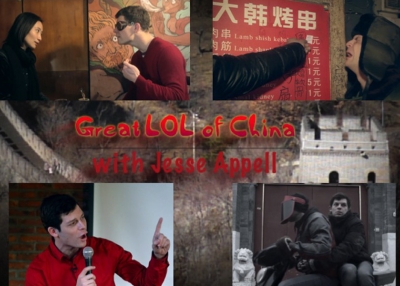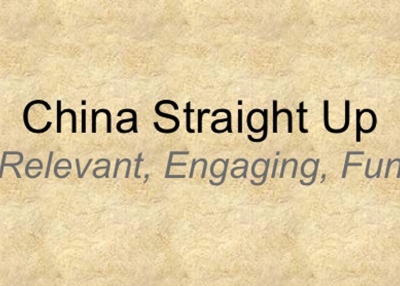Episode 5: Stereotype Bingo
Each episode is accompanied by a blog post which examines various elements mentioned in the video at a deeper level and draws connections to the world we live in today. The following blog post is by Chelsea Shieh, student at Columbia University.
In this episode of Great LOL of China, Jesse plays a light-hearted game of “Stereotype Bingo” to explore an otherwise heavy issue: stereotypes of both Chinese and Americans. Stereotypes shown on the bingo card for Chinese people include being good at math, having squinty eyes, and always eating rice. Stereotypes of Americans include loving guns and being excessively meddling in social affairs. As Jesse explains, while these ideas may seem funny, stereotypes end up dehumanizing others and prevent any form of meaningful conversation and understanding from taking place. In order to think past stereotypes, it may be helpful to ask ourselves the following: where do stereotypes come from, and how do they arise?
How did Stereotypes come about?
Channels such as the media are vital in forming our perceptions of groups of people that we may otherwise have little exposure to or interaction with. For Americans, the rise of Hong Kong action cinema and stars like Bruce Lee in the 1970s were the source for stereotypes like the Chinese Kung Fu master. Since these martial arts blockbusters comprised the majority of Western exposure to Chinese society, this stereotype persisted, and was further reinforced by actors like Jackie Chan.
For the Chinese, much of their exposure to American society is also through entertainment and Hollywood films such as “Transformers,” “Superman,” “Avengers,” and sitcoms such as “Friends,” “Two Broke Girls,” “House of Cards” and “The Big Bang Theory.” To that end, it’s worth noting that for the Chinese, “Americans” is often used to refer to only white Americans. Skin color and facial features play a big role in how Chinese people perceive foreigners. Not all Americans are white, obviously – but the nuances of American society are often lost. While foreigners, and Americans in particular, are a growing number in China, they still make up only a tiny fraction of the population. The majority of foreigners in China reside in Hong Kong and the coastal cities of the mainland; in smaller, inland cities, however, many Chinese have never seen a foreigner in their lives. Thus, many Americans living in China have expressed a feeling of being treated like an exotic spectacle by local Chinese who are unfamiliar with seeing a different face.
China’s Relationship with Foreigners
A closer look at China’s history with foreign nations can perhaps provide insight into Chinese people’s treatment of foreigners today. China, until a few decades ago, was a nation highly closed off to foreigners and foreign influence. Back in the 1830s during Qing dynasty China, only a few trade ports were open to foreigners. China saw itself as self-sufficient, but the British East India Company began to illegally sell opium to the Chinese, creating great alarm for the Qing court. Their attempts to shut down the illicit drug trade escalated into full-blown war, resulting in a crushing loss at the hands of the Western powers, led by Great Britain. In the aftermath of the Opium Wars, China entered its “Century of Humiliation,” during which the country was forced into unequal treaties and loss of sovereignty at the hands of imperialist Western powers and Japan.
The Chinese Nationalist movement grew out of the Chinese people’s resentment of foreigners, combined with their frustration of the weakening Qing government. But it was not until 1949 that Chinese Communist Party leader Mao Zedong was able to unify the country. Mao launched an anti-American campaign, targeting America’s capitalist and imperialist desires; when China fought the U.S. in the Korean War (1950-1953), Mao referred to the American government as a “paper tiger” to indicate that while America may outwardly act aggressive, they can be easily collapsed or overthrown.
After the end of the Cultural Revolution, with the start of the economic reforms of the 1980s, China and the U.S. have engaged in large-scale trade and investments, and along with that, cultural exchange. Since then, China’s antagonism towards the United States has arguably lessened, and foreigners are more welcome in the mainland. Nevertheless, it’s easy to see how stereotypes of the pushy, gun-loving American could have originated in the Chinese people’s knowledge of their own country’s past relationship with foreigners and their understanding of the American government.
America’s Treatment of the Chinese
Examining the history of Chinese Americans reveals how stereotypes can foster not only misunderstanding, but even serve as the impetus for enacting discriminatory legislation. In the late 1800s, ignorance boiled into hatred and violence as a wave of Sinophobia spread across the U.S., as newspapers made claims that “Yellow Peril” would destroy America. The targets of such vicious hatred were “coolies,” a racial slur for unskilled laborers from China, as they were believed to be stealing jobs away from white Americans.
Such claims garnered nationwide support, and in 1882 Congress passed the Chinese Exclusion Act, prohibiting all immigration of Chinese laborers to the United States, and wasn’t repealed until 1943. The Chinese Exclusion Act was the harshest discriminatory ban on immigrants of a specific ethnic group in American history, and it was all based on a hatred of the other, resulting in – quite literally – the ceasing of interaction between Chinese and Americans, allowing for more baseless stereotypes to emerge in this absence.
Not just a harmless joke
It’s important to keep in mind that American stereotypes of Chinese people and Chinese stereotypes of Americans should not be compared or treated as equal statements. The history of Chinese in America has shown that such stereotypes are not merely “jokes,” but rather ideas that have and continue to cause very real harm to Chinese people living in America to this day. While Americans in China may experience discrimination based on skin color, they do not have a parallel experience of oppression that Chinese Americans have faced. Stereotypes function differently based on the power dynamics of the two parties involved – that’s why it’s important to not take things at face value, as the key to reducing the power of stereotypes lies in taking the time to understand the history and context in which such ideas arose. Doing so will allow us to treat others as individuals, rather than the manifestation of stereotypes.
We’re more alike than you’d think!
Ultimately, stereotypes spawn from ignorance, laziness, and an unwillingness to communicate with the other party. As Jesse says in the video, stereotypes strip us of our humanity, and are a means of reinforcing a harmful and artificial boundary between two groups of people, who in all likelihood share more in common than they think! And this isn’t just limited to the fact that some Americans may not worship guns, or that some Chinese people may not be Kung Fu masters. For instance, Chinese youth nowadays can rival American youth’s preoccupation with iPhones and Nike sneakers; the rise of globalization and consumerism in Chinese society has already closed many of the gaps between Chinese and Americans. At the end of the day, we’re all more alike than we’d expect. It’s only by breaking down these man-made boundaries that we can truly begin to communicate and build ties with one another.
Asia Society and the China Learning Initiatives appreciate your interest in learning more about China. If there are any topics you want to learn more about, feel free to email us at [email protected].


